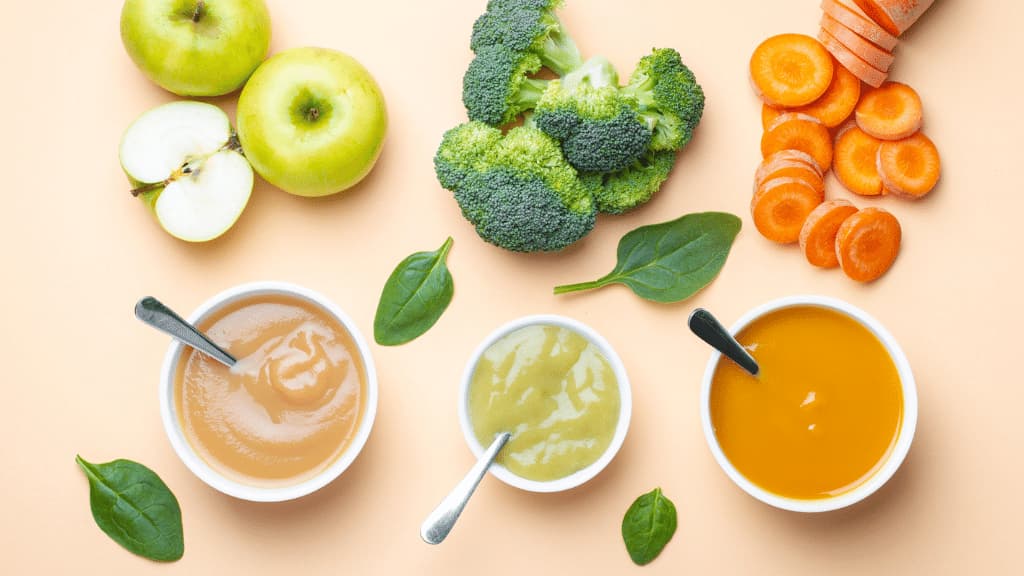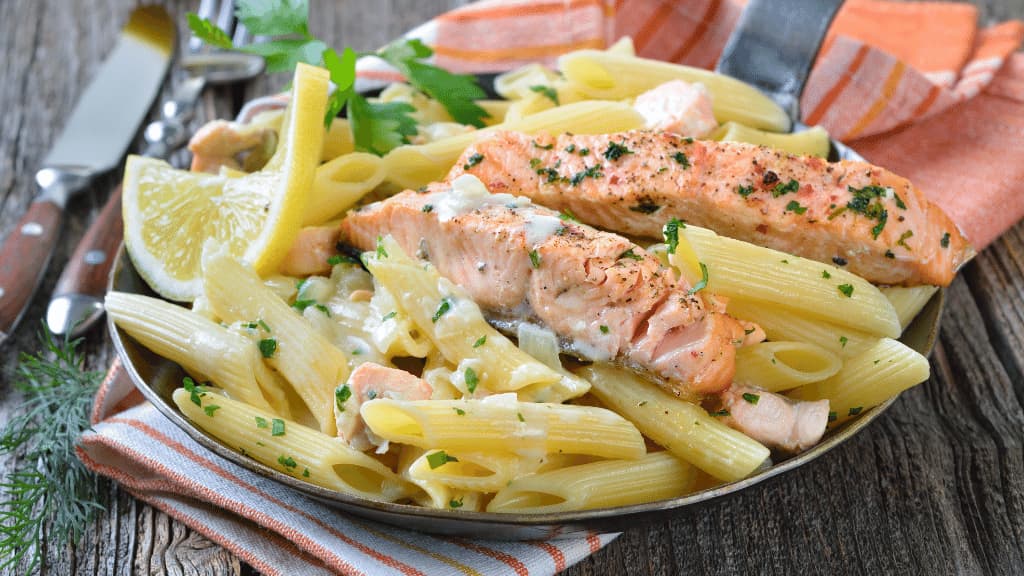Soft Food Ideas [According to a Dietitian]
“Soft Food Ideas” was written by Karina Tolentino, RD & edited/reviewed by Aly Bouzek, MS, RDN. Karina is a dietitian and blogger at Dietitian Karina.
Do you need to eat soft foods and are unsure what to eat?
When considering food texture, it can be challenging to put together meals at the last minute.
This article can help you determine when to eat softer foods, what foods to eat, what to avoid, and tips on getting started. Let’s dive in!
When Should You Eat Soft Foods?
You may need to eat soft foods for a variety of reasons, including:
- After a dental procedure
- If you have difficulty chewing or swallowing
- Having braces
- GI surgery
- Missing teeth
- Fatigue associated with recent illness
Changes in food texture can be either a temporary or a long-term strategy to meet your nutritional needs.
Soft Food Ideas: Textures
Since not all foods are naturally soft, there are modifications that you can make to help make foods easier to eat.
Learn more about liquids, purees, minced and moist, and soft and bite-sized soft food textures below.
Liquids
Liquid foods can include foods like smoothies, protein drinks, or soups. Liquid food choices should be thin enough to consume with a straw and require no chewing. Toppings/condiments include syrup, gravy, and some sauces.
These liquids can also be used to help make purees (as listed in the next section):
- Fruit juice and vegetable juice
- Milk
- Sauces, gravy, and broth
- Yogurt
- Water
Purees

Pureed foods require no chewing or biting.
There should be no lumps and the foods cannot be sticky.
You can buy many foods already in pureed form, like applesauce, mashed potatoes, yogurt, or hummus.
However, you can also use your blender to puree foods like meats, vegetables, or bread by blending them with broth.
You can still prepare and enjoy the flavor of foods you love with a pureed and easy-to-eat texture.
Visit Pureed Foods for Adults [Homemade & Premade] to learn more about pureed foods along with helpful kitchen tools and recipes!
Minced and Moist
This texture focuses on cutting food like meat and vegetables into small pieces equal to or less than 4 mm in width and no more than 15 mm in length.
Minced foods should be soft enough to easily squish with a fork. Minced and moist foods should also require little chewing and no biting.
This texture is usually served with gravies and sauces to increase moisture to make the foods easier to chew and swallow.
Minced and moist soft food ideas include:
- Meat that is finely chopped or minced (if mincing is not making the food small enough, then it will need to be pureed)
- Fish
- Rice, quinoa, etc. (cannot be sticky or divide into individual grains when served)
- Bread and cereal
- Vegetables
- Fruit
Soft and Bite-Sized

This texture is ideal for people who have difficulty biting but can still chew soft foods.
Foods are typically equal to or less than 15 mm = 1.5cm pieces in length.
Bite-sized foods can include:
- Soft meats and flaky fish: tuna, salmon, trout
- Tender vegetables (not stir fry vegetables)
- Stews and soups
- Soft fruits and fruit purees: melon, ripe bananas, berries
- Soft cereals: oatmeal, grits, or those that soften easily in milk
- Cottage cheese
- Scrambled or poached eggs
Be sure to check out our Soft Foods for the Elderly article to learn more!
Soft Food Ideas: What Foods Are Soft to Eat?
There are various food options you can choose from as you build your meals to accommodate soft textures.
Fruits
Soft fruits include:
- Berries
- Canned fruit
- Watermelon
- Ripe banana
- Peaches Without Skin
- Avocado
Vegetables
- Mashed potatoes or mashed sweet potatoes (no skin)
- Pureed vegetable soups like tomato soup
- Softly cooked veggies like carrots or broccoli
Starches
- Cooked pasta
- Soft, warmed bread without seeds
- Oatmeal or cream of wheat
- Quinoa
- Rice
Protein
- Yogurt
- Scrambled or poached eggs
- Cottage cheese
- Flaked fish
- Pot roast, tender
- Beef stew, tender
- Shredded chicken
- Tofu
- Hummus
- Lentils
- Refried or smashed beans
Other
- Ice cream/sorbet/frozen yogurt
- Jello
- Pudding
Use this list to explore what foods you can use to build soft food ideas and meals for yourself.
What Foods to Avoid
When following a soft food diet, you should be aware of foods that may be too difficult to eat. Foods that fall under this category include those that are crunchy, hard, dry, and sticky.
Crunchy or Sticky
Foods like granola, chips, or popcorn will likely be too sharp to eat and may cause discomfort. Avoid bread products without nuts or seeds that may have a crunchier texture.
Additionally, avoid sticky foods that are too sticky, like caramel, dried fruit, gummy candies, and some nut butter.
Dry or Hard
Dry foods like toast, bread, crackers, rice cakes, or cookies may require more moisture to eat comfortably on a soft diet.
Hard foods like raw apples, carrots, nuts, tough meats, or even hard candies can make chewing hard. Avoid stringy fruits and veggies like celery.
For meats, avoid jerky, bacon, and some sausages that require too much chewing.
Soft Food Ideas & Tips
While you are focused on foods that are easy to eat, don’t forget your regular eating habits to make sure you are getting all the nutrients your body needs.
Aim for Balanced Meals
It can be easy to forget about making complete meals when simply trying to find foods that are soft enough to eat.
Try making a well-balanced meal that includes protein, a carbohydrate, and fat to feel full and energized after eating.
Add Fiber Gradually & Hydrate
Fiber is an essential nutrient for your body that helps bowel health, lowers cholesterol, and helps us maintain a healthy body weight.
As you are able, try to include some foods with fiber gradually, like choosing soft wheat bread or whole grain pasta over white pasta. Or try adding oats or bananas to your smoothie and beans or legumes to your lunch.
Additionally, hydrating when increasing fiber is important. This is because fiber uses water to do its job of moving food through our digestive tract efficiently. Drinking enough water will help you avoid discomfort such as gas, bloating, and cramping.
Make sure you drink fluids regularly and aim for clear and pale-colored urine.
Eat Small, Frequent Meals
If you are recovering from a procedure or maybe waiting for your new dentures, eating a large meal like you may have been eating before can be challenging.
Eating smaller meals throughout the day is okay to help you stay energized and meet your daily nutrition needs. Try 5 to 6 small meals and snacks per day and space them out throughout the day (every 2 to 3 hours).
Eat Slowly
You may need to take time with your meals to prevent pain, eating difficulty, or choking. Chewing your food into smaller pieces will make it easier for your body to digest and can help make swallowing the food easier.
Generally, it is best to practice eating mindfully to fully savor your meals and tune in with your body’s natural hunger and fullness cues.
Soft Food Ideas Summary
You may need to follow a soft diet after surgery, from having braces, or adopting it long-term for difficulty chewing and swallowing.
There are many foods you can eat to enjoy a varied and nutritious diet that is soft enough for you. Avoid food that is too crunchy, hard, dry, or sticky to make getting enough food to eat every day easier.
Don’t forget to aim to eat complete meals, stay hydrated, and add fiber (and water) as tolerated. Take time to eat your meals and explore the new textures; it is okay if you need to eat smaller meals more often! Good luck!

Soft foods aren’t always for the elderly as some may assume, as they can be beneficial for different groups. Thanks for sharing!